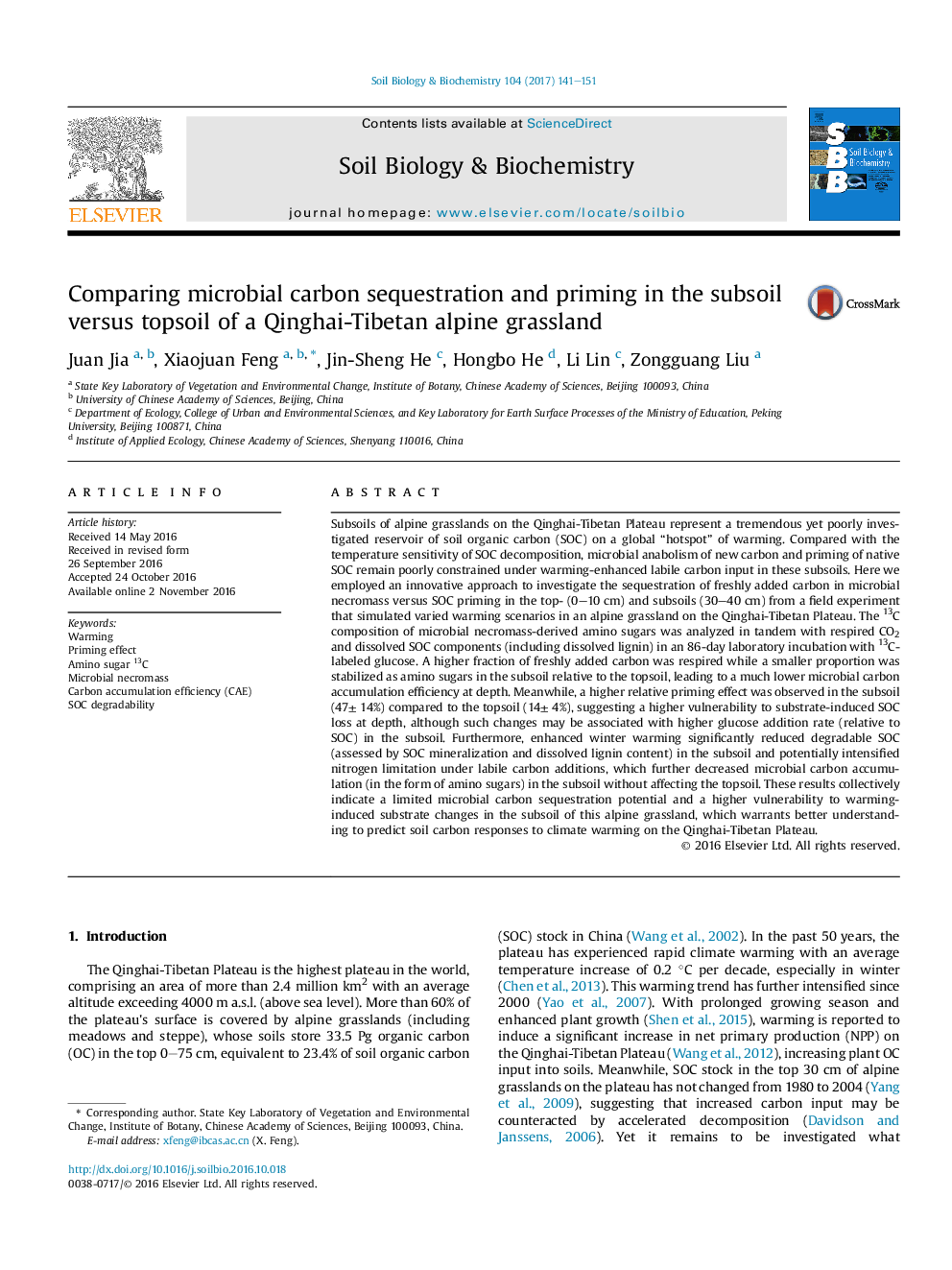| Article ID | Journal | Published Year | Pages | File Type |
|---|---|---|---|---|
| 5516455 | Soil Biology and Biochemistry | 2017 | 11 Pages |
â¢Microbial sequestration of fresh C is probed by a proxy based on amino sugar 13C.â¢QTP alpine grassland had lower microbial C accumulation efficiency in subsoil.â¢A higher relative priming was found in the subsoil compared to topsoil.â¢Winter warming enhanced microbial C decay with labile C input in the subsoil.â¢QTP grassland subsoil SOC may be more vulnerable to labile C input than topsoil.
Subsoils of alpine grasslands on the Qinghai-Tibetan Plateau represent a tremendous yet poorly investigated reservoir of soil organic carbon (SOC) on a global “hotspot” of warming. Compared with the temperature sensitivity of SOC decomposition, microbial anabolism of new carbon and priming of native SOC remain poorly constrained under warming-enhanced labile carbon input in these subsoils. Here we employed an innovative approach to investigate the sequestration of freshly added carbon in microbial necromass versus SOC priming in the top- (0-10 cm) and subsoils (30-40 cm) from a field experiment that simulated varied warming scenarios in an alpine grassland on the Qinghai-Tibetan Plateau. The 13C composition of microbial necromass-derived amino sugars was analyzed in tandem with respired CO2 and dissolved SOC components (including dissolved lignin) in an 86-day laboratory incubation with 13C-labeled glucose. A higher fraction of freshly added carbon was respired while a smaller proportion was stabilized as amino sugars in the subsoil relative to the topsoil, leading to a much lower microbial carbon accumulation efficiency at depth. Meanwhile, a higher relative priming effect was observed in the subsoil (47± 14%) compared to the topsoil (14± 4%), suggesting a higher vulnerability to substrate-induced SOC loss at depth, although such changes may be associated with higher glucose addition rate (relative to SOC) in the subsoil. Furthermore, enhanced winter warming significantly reduced degradable SOC (assessed by SOC mineralization and dissolved lignin content) in the subsoil and potentially intensified nitrogen limitation under labile carbon additions, which further decreased microbial carbon accumulation (in the form of amino sugars) in the subsoil without affecting the topsoil. These results collectively indicate a limited microbial carbon sequestration potential and a higher vulnerability to warming-induced substrate changes in the subsoil of this alpine grassland, which warrants better understanding to predict soil carbon responses to climate warming on the Qinghai-Tibetan Plateau.
